The urbanSCALE rating system is currently focused only on the 100 largest cities in the U.S. (we had to start somewhere!) but I realize that there are many, many examples of vibrant urban places in smaller cities across the country. This blog post is a tribute to small cities with unique urban amenities, attractions, or infrastructure that are not found in many cities that are much larger.
Boulder, CO (2012 Pop. 101,808) – Pearl Street Mall
Pedestrian-only streets have been attempted in downtown areas across the country, mostly in big cities. And for every successful pedestrian mall, there are numerous failed pedestrian streets. So, when a small city like Boulder pulls off a superb pedestrian-only street, it is quite impressive. Boulder’s Pearl Street Mall is a vibrant pedestrian corridor filled with shops, restaurants, apartments, and offices located in the heart of Boulder’s downtown.
Eugene, OR (2012 Pop. 157,986) – EmX Bus Rapid Transit (BRT)
Eugene’s EmX (Emerald Express) Bus Rapid Transit (BRT) line is widely considered one of the best examples of a successful BRT line in the U.S. In fact, the ITDP (Institute for Transportation and Development Policy) ranked EmX among the top five BRT lines in the United States in 2013 (check out the global BRT line corridor rankings here). Ridership along the EmX corridor has far exceeded expectations and transit-oriented development along the line has also yielded major returns on investment.
Bartlesville, OK (2012 Pop. 36,245) – Price Tower: Frank Lloyd Wright’s Only Built Skyscraper
Frank Lloyd Wright, widely regarded as the most famous architect in history, designed hundreds of buildings. However, only one skyscraper designed by Wright was ever built: the Price Tower in downtown Bartlesville, Oklahoma, a small city about 50 miles north of Tulsa. The Price Tower reflects the unique character of Bartlesville’s downtown, a downtown that is home to multiple high-rise buildings and several thousand jobs. Conoco-Philips was headquartered in Bartlesville for many years and still retains a major corporate presence in the city’s downtown. Thanks to recent expansions by several large employers, downtown Bartlesville is currently undergoing a renaissance, with the addition of numerous restaurants, retailers, and new residences.
Kenosha, WI (2012 Pop. 100,150) – Streetcar
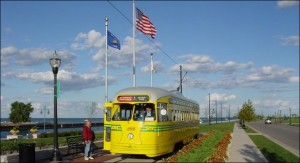 Kenosha’s streetcar line, which opened in 2000, is the only rail transit line in the state of Wisconsin. That’s right…even Milwaukee and Madison, the state’s two major urban centers do not have rail transit lines (although Milwaukee is currently in the planning/design phase of a downtown streetcar line). The Kenosha streetcar connects the city’s downtown to the waterfront of Lake Michigan. Redevelopment has occurred along much of the corridor, with new retail space and hundreds of new apartments and condos.
Kenosha’s streetcar line, which opened in 2000, is the only rail transit line in the state of Wisconsin. That’s right…even Milwaukee and Madison, the state’s two major urban centers do not have rail transit lines (although Milwaukee is currently in the planning/design phase of a downtown streetcar line). The Kenosha streetcar connects the city’s downtown to the waterfront of Lake Michigan. Redevelopment has occurred along much of the corridor, with new retail space and hundreds of new apartments and condos.
Morgantown, WV (2012 Pop. 31,000) – PRT System
Morgantown’s Personal Rapid Transit (PRT) system is truly unique for a small city. In fact, it is the only PRT system in the United States operating today. The PRT system was built in the 1970s as sort of a public/private experiment, funded by the federal government and built by Boeing. Morgantown’s PRT connects the city’s downtown to the main campus of West Virginia University (WVU), and is primarily used by WVU students and staff. Today, the PRT is an absolutely indispensable part of Morgantown’s transportation network, carrying thousands of passengers in the self-propelled PRT cars on a typical fall or spring semester day.
Asheville, NC (2012 Pop. 85,712) – Biltmore Park Town Square
Biltmore Park Town Square is a high-quality new urbanist development that could be described as an “anti-mall”. Although the development sits at the edge of Asheville in what could be considered a suburban location, it successfully combines retail space, restaurants, offices, a hotel, apartments, townhomes, and condos in a compact, walkable setting. These types of mixed-use developments are increasingly common in large metro areas, but are rarely found in smaller cities like Asheville. Biltmore Park Town Square is a good example for smaller cities seeking to add new retail space while also enhancing their urban appeal.
Burlington, VT (2012 Pop. 42,282) – Church Street Marketplace
Like Boulder, Burlington has achieved incredible success with its downtown pedestrian-only street, Church Street. Church Street is a walkable corridor lined with dozens of shops and restaurants packed into an appealing urban setting. In some ways, Burlington’s Church Street Marketplace is even more notable than Boulder’s Pearl Street: Burlington’s population is less than half the size of Boulder’s population, and Burlington is not part of a larger urban region (Boulder is right next door to the 2.6 million-resident Denver metro area). Although, one advantage Burlington has compared to Boulder is its access to a very large population within a one-day drive (over 45 million people live within a 300-mile radius of Burlington compared to only 6 million within a 300-mile radius for Boulder).
Green Bay, WI (2012 City Pop. 104,868) – The Green Bay Packers
Anyone that knows a thing or two about economic development understands that professional sports teams are often a losing proposition for communities in the quest to improve their economy. This is because it is common for cities to spend hundreds of millions in tax dollars for stadiums or arenas to attract or retain a major league sports team (usually the “big four” sports: NFL, NBA, MLB, and NHL, but also increasingly for the MLS), with the hopes of spurring development adjacent to the sports facilities. The case of the Green Bay Packers is truly unique in the sports world. The Packers are the only non-profit, community-owned team in the NFL. This is the main reason why they have never left Green Bay and remain in such a small market by NFL standards. The average population of an NFL metro area is 4,597,500, about 15 times bigger than the Green Bay metro area. In fact, there are no other NFL markets with a population under 1,000,000. Buffalo, the second smallest NFL market has a regional population of 1,134,210. When it comes to major league sports, Green Bay is in a league of its own.
Santa Fe, NM (2012 Pop. 69,204) – World-Class Museums
Santa Fe is well known for its arts and culture. In fact, Santa Fe is ranked in fourth place in Travel + Leisure’s 2012 America’s Favorite Cities for Museums and Galleries. A quick glance at the Top 10 list says it all:
1) Washington, D.C.; 2) New York, NY; 3) Chicago, IL; 4) Santa Fe, NM; 5) Philadelphia, PA; 6) Boston, MA; 7) Kansas City, MO; 8) Minneapolis/St. Paul, MN; 9) San Francisco, CA; 10) Nashville, TN
I haven’t done the math, but I’d be willing to bet that Santa Fe has more museums per capita than any city in the world.
Midland, TX (2012 Pop. 119,385) – Energy Tower at City Center
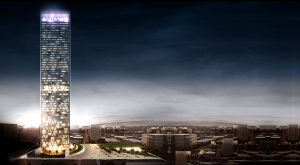 At first glance, the proposed 56-story mixed-use Energy Tower might seem like a far-fetched pipe dream to outside observers. As planned, it will contain more than 1,000,000 square feet of space including: 555,000 square feet of Class A office space, 132 luxury residential units, a five-star 200-room hotel, 67,000 square feet of retail and restaurants, a sky restaurant/bar, conference space, and a new public plaza with a 400-seat amphitheater. When completed, it will be the tallest building in Texas outside of Dallas and Houston. That’s right. Midland will have a building taller than any building in Austin, San Antonio, or Fort Worth. And this thing is for real. In my previous role as an economic development consultant I played a minor role in this project and was afforded the opportunity to meet with the entire development team, which includes world-class investors, architects, and commercial real estate experts. The Energy Tower is no doubt a bold, unprecedented development for Midland. But, the funny thing is that it actually makes perfect market sense because of the ongoing rapid economic and population growth due to the booming energy sector. The current West Texas oil boom has created a situation where the Midland office market and residential market are basically at 100% occupancy levels and there is a real need for new buildings.
At first glance, the proposed 56-story mixed-use Energy Tower might seem like a far-fetched pipe dream to outside observers. As planned, it will contain more than 1,000,000 square feet of space including: 555,000 square feet of Class A office space, 132 luxury residential units, a five-star 200-room hotel, 67,000 square feet of retail and restaurants, a sky restaurant/bar, conference space, and a new public plaza with a 400-seat amphitheater. When completed, it will be the tallest building in Texas outside of Dallas and Houston. That’s right. Midland will have a building taller than any building in Austin, San Antonio, or Fort Worth. And this thing is for real. In my previous role as an economic development consultant I played a minor role in this project and was afforded the opportunity to meet with the entire development team, which includes world-class investors, architects, and commercial real estate experts. The Energy Tower is no doubt a bold, unprecedented development for Midland. But, the funny thing is that it actually makes perfect market sense because of the ongoing rapid economic and population growth due to the booming energy sector. The current West Texas oil boom has created a situation where the Midland office market and residential market are basically at 100% occupancy levels and there is a real need for new buildings.
What have I missed? What are your favorite small-city urban amenities? I’d love to hear your thoughts!

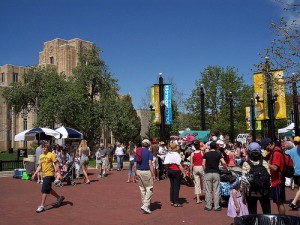

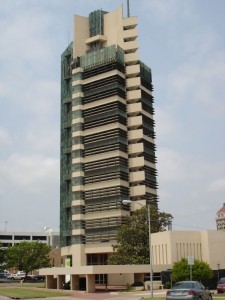
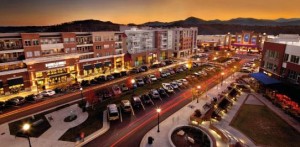
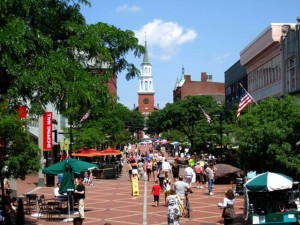
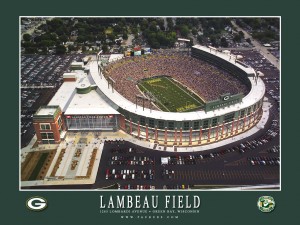
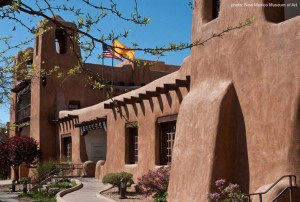



RE: Midland, TX–Energy Tower at City Center.
Hi John it was exciting to read the ideas on this web page, but more specifically the last one concerning the Energy tower.
I am actually doing a research as an entrepreneur from Port Elizabeth, South Africa to find some appropriate and workable property developments in our CBD town area. There are a few abandoned and vandalized office buildings near our mayor’s offices. Our new mayor is also the SAFA president Mr. Danny Jordaan.
I emailed the mayor and other government funders etc to find out if I can get funds and support to buy 1 or more of these buildings and convert it into low cost rental office block and a small scale production building.Our region is doing bad economically.Entrepreneurs can’t really afford much let alone expensive rental.The CBD although not the primary location for business due to new malls all over and somehow interest is not as huge, but it still plays a vital role and is focal to at least 50% of our tourism and historical attractions. You have to at least pass by it to go to the popular beach front and Boardwalk casino complex. So there are potential.
If I would at all be successful I would need to make small choices regarding transforming such a building. What is the best advice you can give me?I like the appearance of the energy building. How can one make the outside of a normal building look spectacular without all the extra glass and lights? Is the for instance a paint that glows at night or some other inexpensive material with the same effect. Things that will make the building look bold and stand out?That’s number one, but I thought that I want to also have another document with me when I go to see the mayor as a back-up if I cannot make this dream come true. Port Elizabeth is beautiful but is not a very big city and our town and adjacent beachfront areas are not that big. What can you recommend to make our CBD area more attractive and create fun during holiday times?
Hi Shane-
Thank you for your comments and questions! I am not at all familiar with the cities in South Africa, but a quick Google search shows a lot of great things about Port Elizabeth. Unfortunately, the Energy Tower in Midland has not materialized. The reasons are not clear, but it was probably just too much to tackle all at once. I think that such a large building in a small city scared off a lot of potential investors and tenants.
One thing that may help is a common practice in US CBD districts: facade improvement grants. Often a city or a quasi-public entity will make grants of $10-$50 thousand for private building owners that provide a matching investment to spruce up the facade of a downtown storefront building. Good luck with your endeavors!
Hi John,
Any ideas for a town with a 2 square mile town limits and 2500 in population – busy transportation highway with old buildings built right up to the highway? Oh wait, we do have an awesome lake but no access or Retail.
https://www.google.com/maps/place/Norwood,+NC+28128/@35.2236882,-80.134646,14z/data=!3m1!4b1!4m2!3m1!1s0x885461bc4c27db83:0x9747e3c872a8ece2
Hi John-
I’m not familiar with your community first-hand, but sounds like plenty of potential. As one idea, take a look at what New Braunfels, TX did with its Gruene historical district: http://www.gruenetexas.com/ And of course, anything you can do to leverage the lake access would make sense…
John, my hometown, Hughes, Arkansas, was a vibrant community with a fantastic school system. Hughes was a farming community which employed a lot of farm labor, and nowadays with the modern farm technology, the farmers use machinery. We used to have 7 to 8 grocery stores, several department stores, 2 drug stores, and on and one. Now, there is not even a grocery store left, the downtown district is gone. A lot of the school’s alumni would love to have the town back back to life. Hughes is 35 miles from Memphis and there is a well-known lake, Horseshoe Lake some 12 miles from Hughes. I have a 33-year-old-son with Down Syndrome. I thought about a small amusement park (with housing for our “special need” individuals) for tourists. The tenants could make crafts to sell to the tourists, etc. Down Syndrome individuals are great performers and dancers–have life stage performances, etc. Perhaps, a museum with some of the old-fashion farming tools, explain to the tourist the way farming used to be done in the old days, etc. Do you think something like this would make Hughes come back to life? [The name “Hughes” spells “he hugs,” which is a characteristic of Down Syndrome individuals.]
Hi, John!
I’m Laura, and I posted a post for your review and advice on my hometown of Hughes, Arkansas. Now, I don’t see it. Could you please tell me what happened to it as a lot of us are very much interested reviving our old hometown.
Thank you,
Laura
Hi John, Geraldton is the coastal regional city centre for the Mid West region of Western Australia. It has a number of legacy issues ie derelict buildings that the local government is doing its best to encourage investment activation. A slow and difficult process. Fortunately however Geraldton has also been selected by the State Government as a preferred growth centre for WA. So an economic growth plan is currently being prepared. One of the priorities coming out of this planning process is the urgent need for a CBD Revitalisation. We have already seen real progress with the city being transformed over the past 15 years through a major foreshore redevelopment. Unfortunately this success has not translated into existing buildings/businesses being redeveloped to marry in with this redevelopment. Any innovative thoughts or creative ideas that we could use to transform Geraldton into something that is world class? Thanks Ross
Hi Gavin- I really appreciate your comments. I have not visited Australia (but it’s on my list as a future destination!), so am not the expert on this topic. But it sounds like you have some tremendous support from your state government. I like the scope of the growth plan as well–focused on partnerships with the public & private sector. Given your community’s many assets and its coastal location, I’d imagine that there are numerous opportunities for a much higher level of economic development there. Given your roughly 4 hour driving distance from Perth, I see some potential similarities between the Portland, OR & Bend, OR example. Bend is about 4 hours away from Portland and has emerged as one of the premier growth centers in the Western US, thanks to its downtown investments, craft breweries, and outdoor recreation amenities. I’d also be interested to explore the role of higher education expansion as part of Geraldton’s economic strategy, both in the CBD and the city as a whole…
John, my hometown, Hughes, Arkansas, was a vibrant community with a fantastic school system. Hughes was a farming community which employed a lot of farm labor, and nowadays with the modern farm technology, the farmers use machinery. We used to have 7 to 8 grocery stores, several department stores, 2 drug stores, and on and one. Now, there is not even a grocery store left, the downtown district is gone. A lot of the school’s alumni would love to have the town back back to life. Hughes is 35 miles from Memphis and there is a well-known lake, Horseshoe Lake some 12 miles from Hughes. I have a 33-year-old-son with Down Syndrome. I thought about a small amusement park (with housing for our “special need” individuals) for tourists. The tenants could make crafts to sell to the tourists, etc. Down Syndrome individuals are great performers and dancers–have life stage performances, etc. Perhaps, a museum with some of the old-fashion farming tools, explain to the tourist the way farming used to be done in the old days, etc. Do you think something like this would make Hughes come back to life? [The name “Hughes” spells “he hugs,” which is a characteristic of Down Syndrome individuals.]
John, this was posted on June 9, 2016, and I’m looking forward to hearing from you. This is a copy-and-paste of the original posting. Thank you!
I just found your website and it has some interesting information. I live in Gresham Oregon and our population is just under 120,000 we have a cute little Historical Main Street in our little downtown area. Over the past several years we are seeing a shift of loosing retailers, adding more eateries, bars, hair salons (we have like 40 of them in our downtown core) and offices. Now after attending a planning meeting found that they are going to add some 5 story buildings of mixed use – with retail at the bottom and apartments on the 4 floors above. They are wanting to add 91 units in one complex and 50 units in another one. The 50 unit one will not have parking and the 91 unit will have 57 spaces. We are having trouble keeping spaces filled with retail and small specialty stores that have been in business for over 20 years are closing one by one. Increased rents and buildings that are falling apart. Can an Urban area thrive without retail? We have 2 great parks, several awesome events in summer, art walk, car show, teddy bear parade, movies and live music in the parks. So we have a lot of things going for us, I just worry about the future without barely any shopping. We have 4 2nd hand or vintage children’s, furniture, books and women’s clothing stores, a discount store of all kinds of stuff, a women’s clothing store, a yarn store and a specialty custom dress store, a very old poorly managed and set up furniture store, a great candy shop, game store, guitar shop, natural pet food, 2 jewelry stores and a women’s accessory store. We used to have twice as many retailers and all of them were new not 2nd hand. Do you think we can survive with a ton of apartments and no retail?
I do think Gresham, and many similar communities will be able to thrive under the “new realities” facing the traditional retail sector. As long as you have growth and development, and a mixture of uses, your downtown area will survive. There may be fewer clothing stores and more restaurants, but with new urban housing coming in, that will create energy and demand for services, restaurants, and other activities that enhance your community.